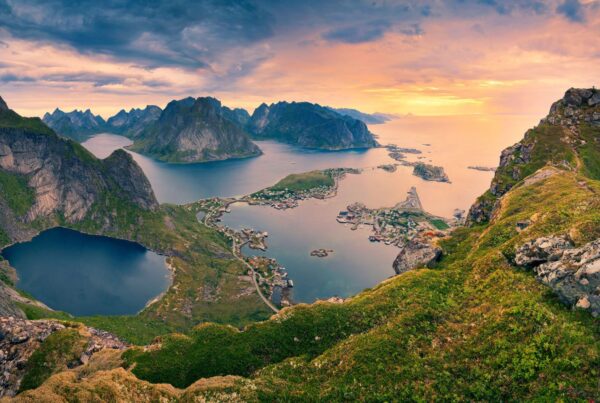At the Destination Lab, an extensive examination of the future of tourism destinations held in Riva del Garda, Mirko Lalli, CEO of The Data Appeal Company, met and interviewed Maria Elena Rossi, tourism expert and Global Marketing and Promotion Director at ENIT SpA, a company overseen by the Italian Ministry of Tourism.
This was a unique opportunity to learn about the current trends in Italian tourism, the investments being made by the country’s DMO (Destination Management Organisation), and the short-term prospects for the industry.
Mirko Lalli: What are the key initiatives and target markets for Italy to promote tourism and commercial activities in 2024?
Maria Elena Rossi: Of the activities we’re engaged in, two areas are particularly worth following closely.
Firstly, there’s the resurgence of high-potential markets, supported by the near-complete reestablishment of connections with our country since 2019, although there’s still room for improvement in terms of the number of travellers.
I’m referring, for instance, to the initiatives we’ve undertaken in Brazil within the B2B sphere, encompassing leisure and specifically focusing on luxury.
We’ve also been actively involved with Mexico, which boasts a direct connection with Rome through a daily flight that will soon double, further enhancing the significance of this market.
We’ll be making our presence felt in Singapore at luxury-related events, and shortly, we’ll be returning to China, Japan, South Korea, and India to partake in specific workshops. We always strive to maximise opportunities for operators, especially in relevant contexts, to highlight e the most significant investments.
These markets are gaining momentum again, and I believe it’s crucial to seize these opportunities by carefully examining the potential development data.
The second area I want to discuss is the meeting industry, or MICE.
Italy leads the way in Europe, having surpassed Spain in the number of international meetings.
Globally, we rank second only to the USA in the number of international conferences, underscoring the remarkably swift post-Covid recovery.
We’ve surpassed others in recovering lost ground, thanks to investments made years in advance. Our meeting industry has effectively met these goals, and we’re delighted to have consistently backed its initiatives, promoting Italy as a cohesive global brand while honouring the unique characteristics of individual local convention bureaus.
This shows how crucial it is for us to cater to the needs of businesses, making Italy a coveted destination for major congress events.
Mirko Lalli: What data can you share with us about the current state of tourism? What are your perceptions of the current trends, and what can we expect for the upcoming seasons?
Maria Elena Rossi: Looking at the data from the European Travel Commission (ETC), which conducts quarterly surveys on intra-european summer expectations, we can see they’re extremely positive.
About 75% of Europeans plan to travel to a foreign country at least once.
I mentioned European data because, as we know, the intra-European market represents the most significant share for us. Italy leads among non-European countries in Europe, but in intra-European travel, it comes after Spain and France. So it’s crucial to consider the German, Austrian, and other mature and traditional markets that constitute our critical mass.
Italy has also experienced significant growth in tourists coming from Spain and France, which was a post-Covid surprise. We’ve seen double-digit data since 2021. Backed by travellers from the newer generations who are venturing to discover our nation, this stands as one of the pivotal segments to concentrate on for the future, given its role in driving innovation and inspiring novel travel motives.
We’ve logged over 430 million overnight stays and crossed the 50 billion mark in international spending.
I anticipate these numbers will not only hold but also be surpassed in 2024, as per forecasts from UN Tourism and ETC. Despite geopolitical uncertainties and price pressures impacting the domestic market last year and expected to continue this year, we’re seeing significant growth in non-European markets like India, China, Japan, and South Korea.
And let’s not forget the Gulf market. Despite the ongoing geopolitical crisis, it experienced the most significant growth in 2023, doubling the 2019 figures in terms of flows to Italy. It seems we have plenty of positive prospects to capitalise on.


Mirko Lalli: You recently posted a news update about the highly positive data coming from South America, specifically Argentina and Brazil. What do you think is driving this interest? Could heritage tourism be a factor?
Maria Elena Rossi: I believe heritage tourism has been a catalyst and could provide a boost. However, as always, these boosts take time.
Regarding the Brazilian market, the term “heritage tourism” isn’t quite the right term to use. Brazilians travelling to Italy are high spenders. Even if they are of Italian descent, they don’t want to be perceived as former immigrants.
There’s a significant difference between the Brazilian and Argentine markets. Argentinians maintain a very strong connection with Italy. Although the Argentine market is interesting, it’s heavily impacted by the current economic crisis in the country.
Many initiatives will be carried out by the Ministry of Foreign Affairs and with ENIT, also targeting other interesting countries like the United States and Canada.
Canada, for instance, is a rapidly growing market in terms of revenue for our country. Australia also represents a significant market; we are the top European destination for incoming Australian travellers. We have a direct flight from Perth to Rome, which is always fully booked.
Therefore, there are several countries, besides South America, that are very interesting to invest in, especially in terms of economic returns. This holds true for first, second, and third-generation Italians who continue to travel to our country.
Mirko Lalli: To conclude, here’s one final piece of advice for operators. In your view, which emerging tourism offerings should they prioritise this year? Sustainability is a hot topic, but what are the practical ways to integrate it?
Maria Elena Rossi: What we’re seeing, especially from more mature European countries like the Nordic ones, which have seen significant growth, as well as Germany and the Netherlands, is the expectation to see tangible sustainable actions and behaviours from the operators themselves.
Another important aspect is the collaboration among operators to provide integrated service and experience opportunities. This is highly appreciated by tourists as it allows them to better understand what happens when they arrive at their destination.
Many regions have already worked on this issue, such as Riva del Garda, while others still need to do so. I believe it’s primarily a task for the businesses themselves.
Stay in the know
Stay up-to-date with the latest news tailored to your industry!
Subscribe to our newsletter to receive monthly research, eBooks, industry updates, data-driven reports and more.





